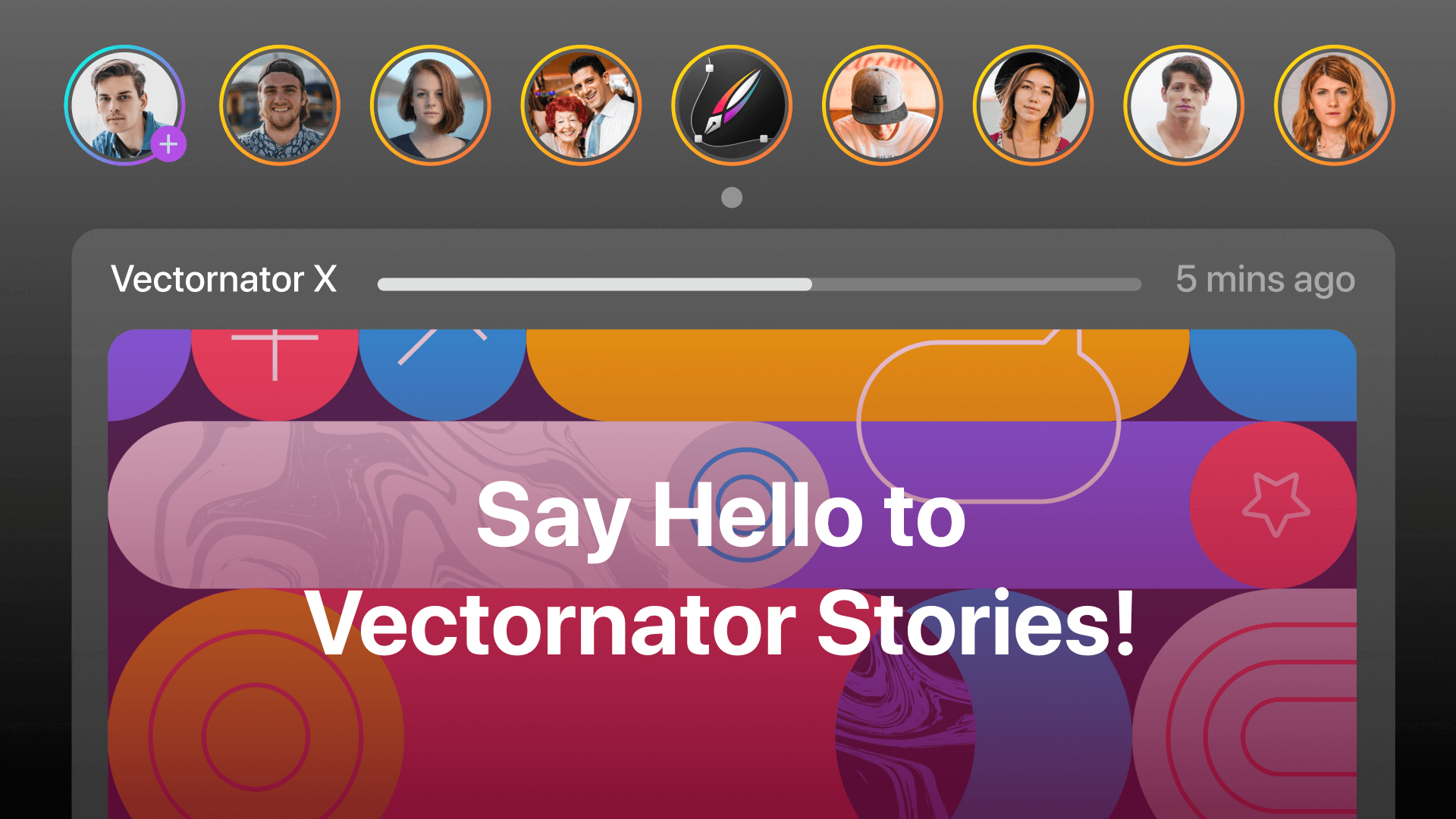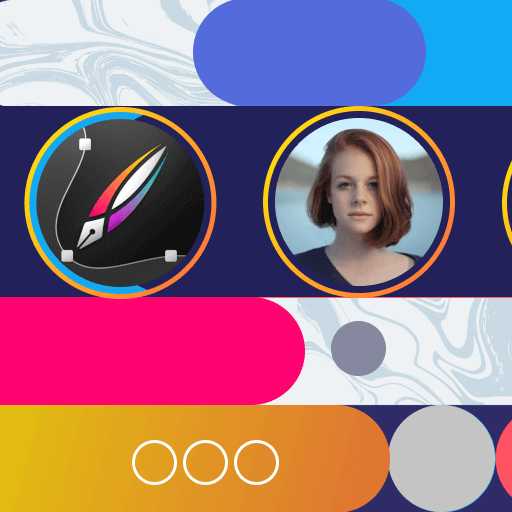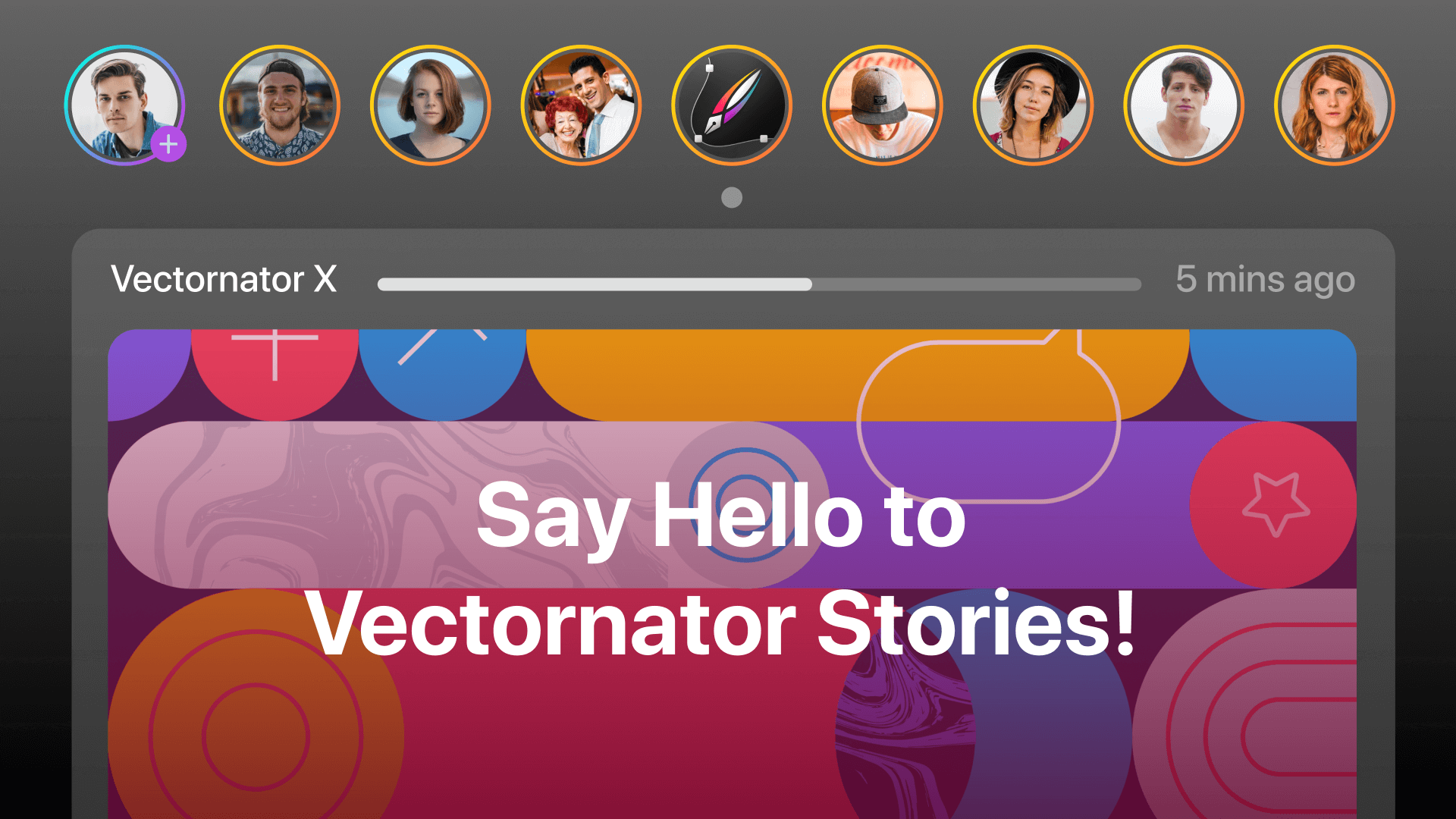
Don't worry, we’re not adding Stories to Vectornator. (. . . yet. *wink*)
But like them or not, the Stories format seems to have taken over social media by storm.
Why has this short-form style of video content resonated so well with users?
And why have so many social media platforms followed along with their own version of short video content?
But there’s more to it than that. Advertising goes where the users are, so there must be a reason why so many people are engaging with the stories format so heavily.
There are well over a billion stories being shared every day across the Facebook ecosystem of Facebook, Instagram, Messenger, and WhatsApp, and over 500 million people use Instagram Stories alone every single day, not to mention the others.
Stories can make people feel like part of a greater community. Even though some apps allow people to save stories if they want to, the ephemeral nature of the content means that users want to stay “in the loop”, and can make them feel like they are missing out on something if they aren’t keeping up with their favorite accounts.
Jumpstart your ideas with Linearity Curve
Take your designs to the next level.
The innovator (Snapchat)
.jpg)
Social media stories first debuted in October of 2013, when Snapchat introduced a new iteration of their signature brand of temporary social media: Instead of sending a video or photo that could only be played a certain number of times, the idea was to let users post a video or photo that everyone could see - but that would only last for 24 hours.
The idea of real-time documentation is key to the format’s success. People want to keep up to date with what their friends are doing. This is why Snapchat had been so popular, it was a more visual evolution of texting.
But the story format enables users to post time-contextual content that all of their friends could see, without having to send it to each of them. The key difference here is that the viewer is choosing to view the story, instead of having it sent to them. They are choosing to opt-in, rather than the other way around.
The challenger (Instagram)

Snapchat was the only social media story game in town for a while, until Instagram came along and decided to challenge them.
In August of 2016, Instagram launched their Stories feature, which has by far been the most successful implementation of short-form video on any social media platform.
Instagram now has over 500 million daily Stories users, making them a dominant segment of Instagram’s overall user base.
All aboard the bandwagon
.png)
In 2017, a lot of brands realized that social media stories weren’t just a fad, and so they jumped onto the bandwagon.
Facebook rolled out several more experiments with the Stories format, including the Status update for WhatsApp, the Messenger “Day” feature, and of course, Facebook stories.
In the same month (March), Medium, the popular blogging platform, released their “Series” function, which let their users publish content as “cards” of either text, visuals, or video.
Skype briefly attempted to jump in the game with their “Highlights” feature on the mobile app, which they quietly rolled back less than a year later when their audience didn’t respond as they had hoped.
Google also branched out by experimenting with YouTube Reels, a very similar feature to the classic Snapchat story.
YouTube’s version, however, has evolved over the years, getting a name change to a more on-the-nose “YouTube Stories” in 2018. It’s only ever been available to channels above a certain subscriber threshold, however.
Now, YouTube is also trying a new iteration in addition to stories. This one is more of a competitor to TikTok and Instagram Reels (hmm, that name sounds familiar . . .). Their new format is called “Shorts”, and is currently being tested in India (where TikTok has incidentally just been banned) before possibly expanding to other countries.
The experimenters
.jpg)
These days, we’re seeing some apps add story features that no one saw coming.
Spotify added a stories feature around this time last year that lets their influencers add visual or video content as a sort of “intro” to their playlists. Currently it’s not available to artists or advertisers, but it remains to be seen what evolutions their version of stories will undergo.
Ready to create brand assets that pack a punch?
Visit our Academy for free design of social media stories courses.
Twitter also rolled out their version of stories, called “Fleets”. They enable users to post ephemeral content in an almost identical fashion to Instagram stories.
LinkedIn also recently implemented a stories feature on their mobile app. Their version lasts 20 seconds, and has several differentiating features which make it more geared towards a professional audience.
This recent influx of new platforms implementing a stories feature has prompted some mocking from the internet . . .
So we had to join in on the fun . . .

The rise of TikTok

The most recent social media format evolution has been spearheaded by TikTok. It's a short-form video format, but isn’t ephemeral like stories.
TikTok is essentially a modernized version of the now-defunct app platform Vine, mostly remembered for its particular brand of hectically-paced video memes.
This style of video content has been copied by Instagram in the form of Reels, and now YouTube Shorts are being tested in certain markets.
The future
It seems like the future of video content is vertical. In 2019, 82.5% of visitors to video-centric websites said that they held their smartphone in portrait orientation most of the time.
As much as we hate watching vertically-filmed phone camera footage on YouTube, short-form video is on the rise, and is almost exclusively captured, edited, released, and consumed on mobile devices.
If you need to make some content for your Instagram Story or some Twitter Fleets, check out our easy-to-use Vectornator templates! They automatically export your project at the exact right dimensions to be uploaded to your platform of choice.
As our phones continue to become more powerful and provide us with more and more opportunities to interact with each other, how will we adapt?
What will the future of social media look like in five years? In ten?
If we take our cues from what we’re currently seeing, the tech world seems to think that short-form video is the horse we all should be betting on.
Jumpstart your ideas with Linearity Curve
Take your designs to the next level.


Share this!
Ben Barnhart
Ben is a Content Lead for Linearity living in Berlin. His hobbies include board games, cooking, reading, and writing.


:quality(75))
:quality(75))



:quality(75))

:quality(75))
:quality(75))



